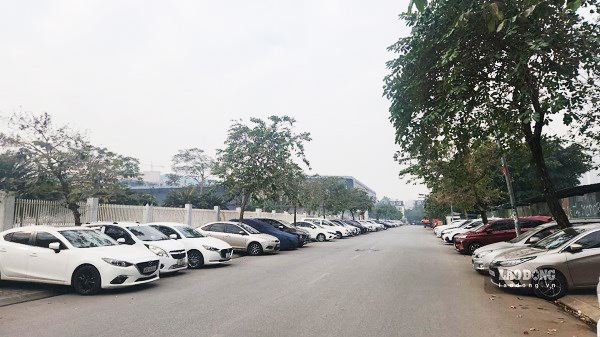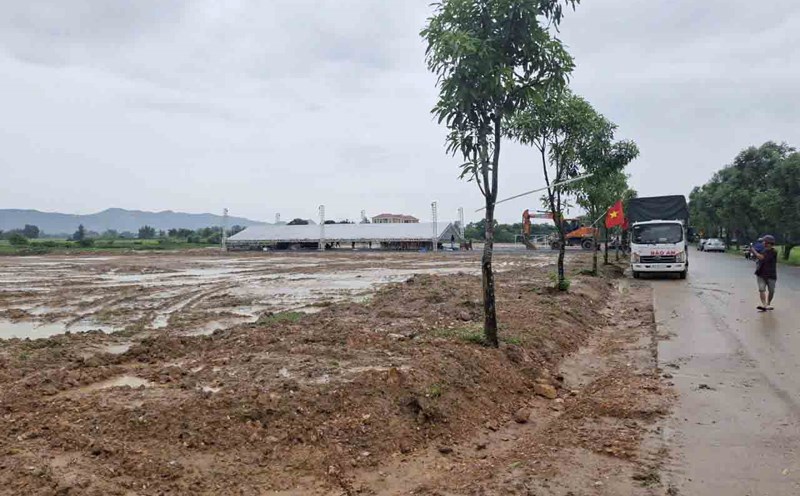Linh Dam Urban Area (AD), Hoang Liet Ward, Hanoi City started construction in 1997 with a scale of over 200 hectares. This is one of the first new urban areas in Hanoi.
According to the plan, housing in Linh Dam urban area only accounts for the remaining 23% - a harmonious combination of community living space, parks, trees, and synchronously planned technical infrastructure. In 2009, Linh Dam was recognized by the Ministry of Construction as a model urban area to expand nationwide.
However, everything is different, from a model urban area with population density, construction and high-rise planning in a synchronous manner, Linh Dam has been gradually adjusted locally and then crushed.
For example, the CC6 plot of land was originally planned as a hotel, office and high-end housing but has been adjusted to build 12 HH apartment buildings with a height of 36 to 41 floors with more than 8,000 apartments and a capacity of more than 30,000 people. Meanwhile, the infrastructure of this area only meets the maximum of less than half of the above-mentioned population.

The sudden increase in population beyond the endurance of infrastructure immediately caused consequences. Ms. Bui Thi Hoai (Hoang Liet ward) said that in the early morning and late afternoon, when tens of thousands of people poured into the streets, it caused congestion.
"Before 2013, the roads in Linh Dam area were very airy, almost no traffic jams, but after the population increased due to the dense apartment building, it was jammed every day," said Ms. Hoai.
According to Mr. Tran Anh Phi, living in HH Linh Dam apartment complex, the increase in population while the infrastructure cannot keep up has caused many inconveniences from parking to flooding during rain.
"Cars are now overflowing onto the road, there is no place to park in apartment buildings. The construction density is high, the concrete covers the ground, causing flooding due to not being able to escape in time," Mr. Phi complained.
According to the investigation, the CC6 land plot of Linh Dam Lake Tourist Area and Housing is licensed for construction as a complex of service works, commercial offices and high-rise housing at HH1, HH2, HH3 and HH4.
The investor has requested to change and adjust the construction compared to the original planning, adjusting the construction density target from 24.6% to nearly 40%, the average height of the floor is from 20, 30 floors to a maximum of 40 floors.

At the end of 2014, the Inspectorate of the Ministry of Construction inspected this project and concluded that buildings HH3 and HH4 had not violated the approved high-rise planning. At that time, HH3 building was under construction with about 5/40 floors, HH4 building was under construction with about 18/40 floors, HH1 and HH2 buildings had not yet been constructed.
According to the Ministry of Construction, violations of construction order at the HH Complex project only occurred after June 2015, when the Inspectorate of the Ministry of Construction transferred the inspection conclusion to the Hanoi People's Committee for handling according to regulations.
Discussing this issue with reporters, Architect Dao Ngoc Nghiem - Vice President of the Vietnam Urban Planning and Development Association said that Linh Dam Urban Area has problems with local planning adjustment. When planning Linh Dam, there were many requirements for technical infrastructure, population, and high-rise to ensure landscape architecture.
However, during the adjustment process, the authorities allowed the adjustment of the high-rise of the house, lacking management of the function of the land plot. When investors come, they just build houses and don't want to build public works.
"When necessary, the planning can be adjusted but must be strictly implemented. In addition to being approved by the state management agency, there must be agreement between the community and the agency that has participated in planning.
We have not focused on the role of the community. Perhaps Linh Dam is a lesson in planning adjustment that is not accurate according to existing processes and regulations" - Architect Dao Ngoc Nghiem said.











